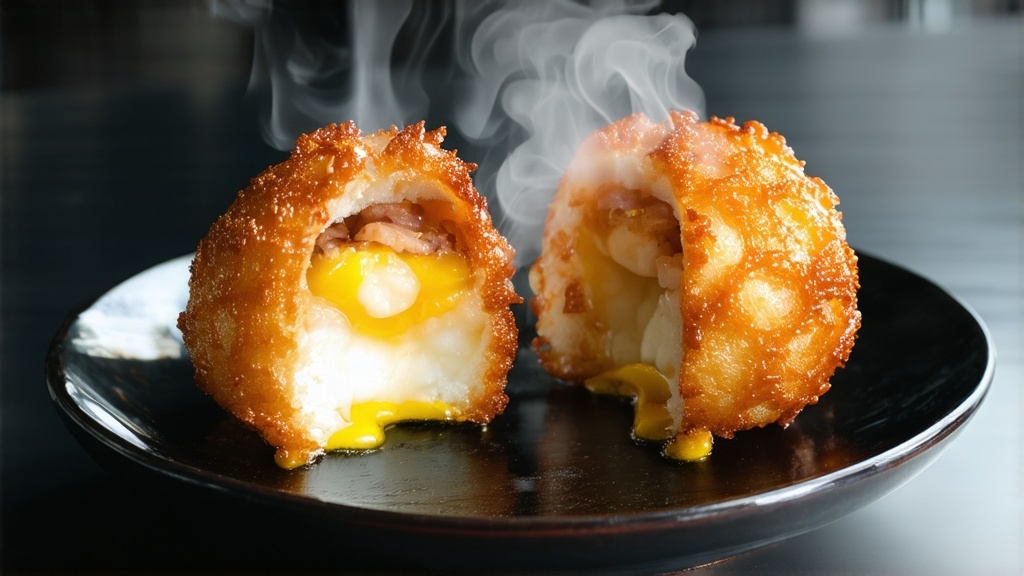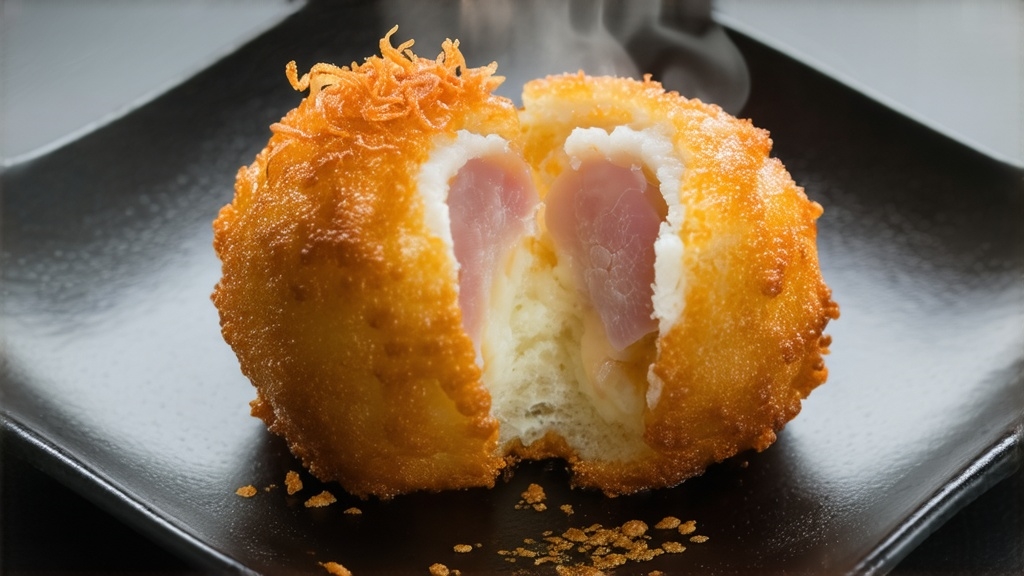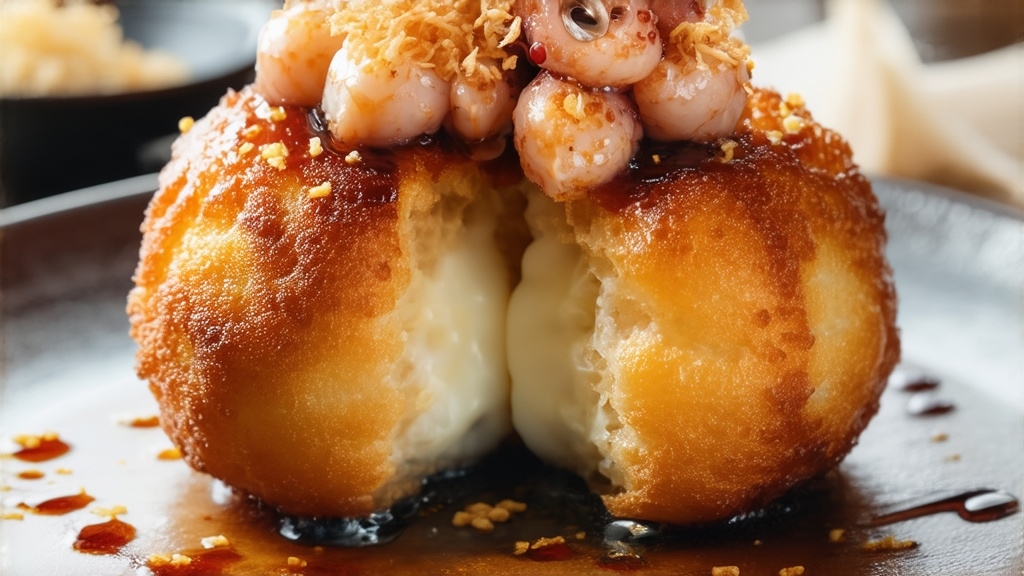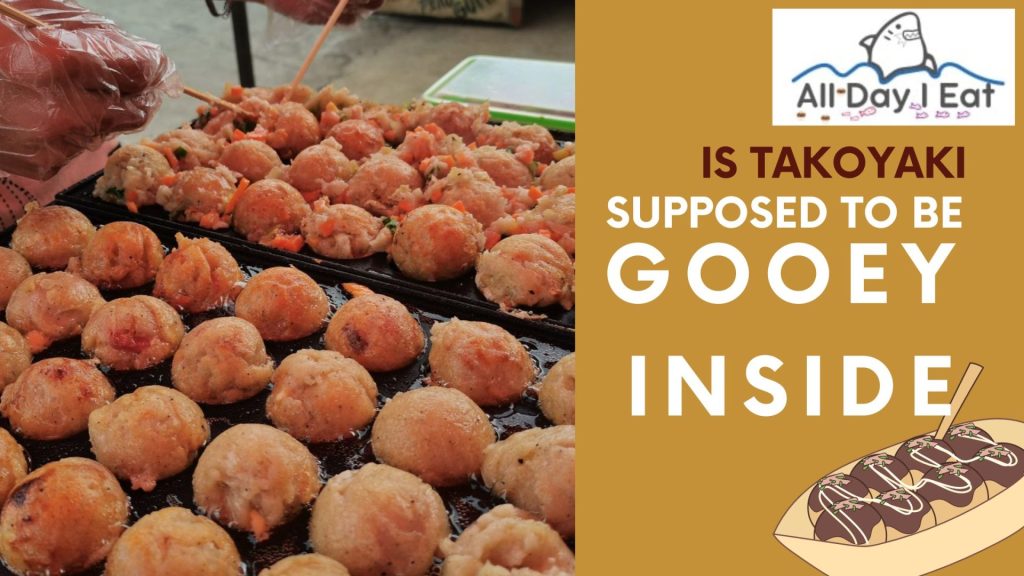Are you curious about the texture of takoyaki? Is takoyaki supposed to be gooey inside? Well, wonder no more! This article will provide all the answers you seek.
Takoyaki, or ‘octopus balls,’ is a beloved Japanese street food known for its unique combination of crispy exterior and soft, gooey interior.
Achieving the perfect texture requires skill and practice.
In this article, we’ll uncover the secrets behind the irresistibly gooey insides of takoyaki and share tips on how to enjoy it to the fullest.
Get ready to dive into the world of takoyaki!
Key Takeaways
- Takoyaki’s exterior is lightly crispy from the perfectly cooked batter, while the interior is soft and moist, creating a melt-in-your-mouth sensation.
- Each takoyaki ball contains a piece of succulent, chewable octopus.
- The combination of these textures defines takoyaki’s iconic status.
- The diverse textures make each bite a memorable experience.
The Perfect Takoyaki Texture: Is Takoyaki Supposed to Be Gooey Inside

When enjoying takoyaki, you may find the gooey texture inside to be a defining characteristic of the dish.
The soft and creamy interior is what sets it apart from other street foods.
The creaminess of takoyaki is contributed by the runny batter, tender octopus meat, and the watery consistency from dashi stock and soy sauce.
Adding tenkasu, the fried tempura bits, also adds a crunchy element to the balls. If not eaten hot, the tempura can melt and contribute to the creamy texture.
Achieving the perfect texture requires skill and practice.
When tasting and enjoying takoyaki, embrace the gooey texture which gives it a creamy mouthfeel. Some may find it unusual at first, but rest assured, it isn’t undercooked.
Unveiling the Takoyaki Texture: Gooey Interior Explained
One of the main attractions of takoyaki is its amazing texture, which contrasts a crunchy exterior with a melting interior. The exterior is formed by frying the batter in a special pan with round holes and flipping the balls rapidly to create a thin and crispy layer. The interior stays soft and juicy, as the octopus and the batter release steam while cooking. The octopus also provides a different texture, as it is soft and springy, but not hard or stringy.


The texture of takoyaki is further improved by the various toppings and sauces that are poured over the balls, such as mayonnaise, takoyaki sauce, seaweed flakes, and bonito flakes. These add more taste and moisture to the takoyaki, making each bite a mouthful of umami.
Takoyaki is best eaten hot and fresh, as the texture can deteriorate over time and lose its crunchiness. The texture of takoyaki is one of the reasons why it is so irresistible and enjoyable.
To better understand the gooey interior of takoyaki, consider the following:


- The Softness: The steamed octopus filling and slightly runny batter contribute to the softness of takoyaki. Imagine biting into a warm, melty cheese that oozes out of the crispy shell, enveloping your taste buds in a creamy embrace.
- Osaka’s Tradition: Osaka, the birthplace of takoyaki, is known for its traditional preparation. The locals have perfected the art of achieving the ideal texture, striking a delicate balance between the gooey interior and the crispy exterior.
- Creaminess Factors: The use of cake flour instead of white flour can make the interior even creamier, while the inclusion of tenkasu (fried tempura bits) adds a satisfying crunch.
Now that you understand the nuances of takoyaki’s gooey interior, you can appreciate this delightful Japanese street food even more.
Mastering the Art of Takoyaki: Achieving the Ideal Gooeyness


To truly experience the mouthwatering delight of takoyaki, you’ll want to perfect the ideal gooeyness that envelops your taste buds in a creamy embrace.
To master the art of making takoyaki, you need to use the right cooking techniques.
- Cook the balls for about 3 minutes on each side, flipping them over to ensure even cooking.
- After 2 minutes, rotate them 90 degrees for a golden brown, crispy exterior.
- Breaking up the batter around the balls while cooking helps achieve the desired texture.
- Using a takoyaki maker or pan and continuous turning ensures even cooking and browning.
Traditionally, takoyaki is served hot and fresh with various toppings and sauces.
It can be enjoyed as a snack or as part of a meal, and sharing it with friends or family enhances the experience.




Konnichiwa! (Hello!) I'm Pat Tokuyama, a Japanese tofu cookbook author, who travels for music, food, and adventure. If you like Japanese tea, checkout some of the newestorganic japanese tea, matcha bowls and noren and more!
** Curious about the Plant Based Japanese Cooking Club? ** Learn more here!